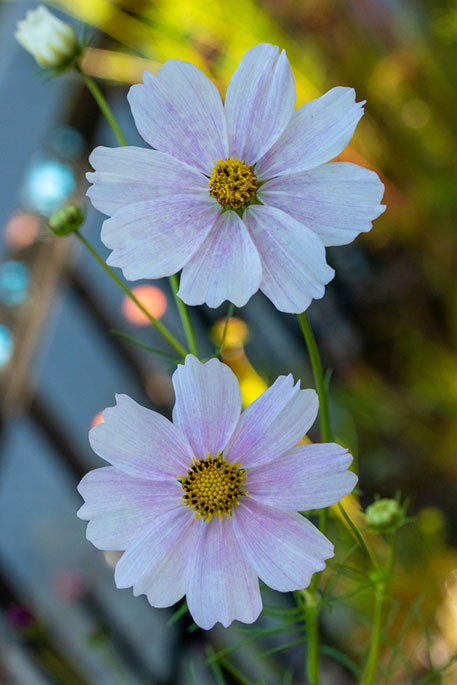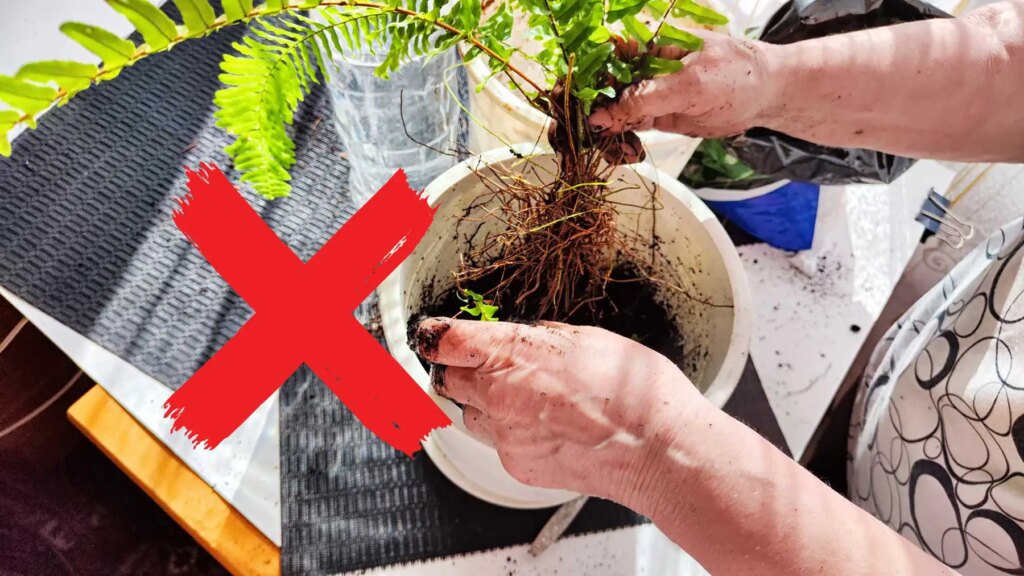
Growing cosmos is a delightful way to add vibrant color and charm to your garden throughout the summer months.
These delicate, daisy-like flowers are not only easy to grow, but their impressive adaptability and resilience make them the perfect choice for inexperienced and seasoned gardeners alike.
By following a few essential tips, you’ll be able to enjoy the allure of these stunning blossoms from early summer until the first frost.
One of the most appealing aspects of cosmos is their fuss-free nature. Even in less-than-ideal soil conditions, they will continue to thrive and produce an array of colorful blooms. In fact, cosmos have earned a reputation for being low-maintenance flowers that can brighten up any dull or neglected area of your garden.
Plus, they’re also known for attracting pollinators such as butterflies and bees, which can be an added bonus for your plants and the environment.
In order to keep your cosmos blooming all summer long, it’s important to focus on the fundamentals: proper planting, sunlight, water, and a little attention to pruning. With these basic elements in check, you’ll have a flourishing cosmos display that will be the envy of your neighbors and a joy to admire.

So, let’s dive into the world of cosmos and discover how you can transform your garden into a kaleidoscope of beauty this summer.
Growing Cosmos – How To Keep Cosmos Blooming All Summer!
Cosmos are a delightful group of flowers that grow quickly and are perfect for any garden. Their vibrant blooms and feathery foliage make them an excellent choice for summer gardening. To ensure your cosmos flourish all summer long, follow these simple tips.
First, choose the right location for your cosmos. These plants thrive in full sun, so select a spot where they will receive at least six hours of sunlight each day.
Make sure the soil drains well, as cosmos don’t like sitting in overly damp conditions. Adding compost or well-rotted manure will improve your soil’s structure and provide essential nutrients.
Planting cosmos seeds is easy. Sow them directly into the prepared soil, spaced about 12-18 inches apart, and cover with a quarter-inch of soil.
Water the area gently after planting, and keep the soil consistently moist until your seedlings emerge, which typically takes 7-21 days. Once established, cosmos are somewhat drought-tolerant but will benefit from regular watering, especially during dry periods.

Cosmos are low-maintenance flowers, but there are a few simple tasks that can keep them blooming:
- Deadhead: Removing spent blooms encourages new flower growth and extends the blooming period. Simply pinch off the flowers that have faded, taking care not to damage the rest of the plant.
- Thin out: If your cosmos become too crowded, thin out some of the weaker seedlings to allow for better airflow and room for remaining plants to grow.
- Fertilize: While cosmos don’t require heavy feeding, a light application of balanced, all-purpose fertilizer every four to six weeks can help maintain steady growth and beautiful blooms.
- Control pests: Keep an eye out for aphids and other pests that can damage your cosmos. If you notice an infestation, remove the pests manually or treat the area with a natural insecticide.
By following these straightforward steps, your cosmos will reward you with stunning, colorful blooms all summer long. Enjoy the vibrant display and satisfaction of cultivating these lovely flowers in your garden.
Choosing the Right Variety
Annual vs Perennial Cosmos
When selecting cosmos for your garden, the first decision you’ll need to make is between annual and perennial varieties.
Annual cosmos are plants that complete their life cycle within one growing season, while perennial cosmos will come back year after year. Depending on your garden goals and maintenance preferences, either can be a great choice.
Annual cosmos provide a vibrant display of color throughout the summer, with minimal upkeep. Perennial cosmos, on the other hand, require a bit more care but offer more predictable blooms each year.

Color Variations
Cosmos come in a wide array of colors and captivating combinations. Popular choices include:
- White cosmos: These pure, pristine flowers make a striking contrast with green foliage, and are perfect for creating a serene atmosphere in your garden.
- Pink and purple cosmos: These romantic hues range from pale pink to deep magenta, and can easily enhance both relaxation and visual interest in your garden beds.
- Orange and yellow cosmos: For a pop of cheerful, sunny color, opt for these bright and bold options.
Feel free to mix and match to create a palette that best suits your style and preferences.
Height Differences
Cosmos also vary in height, which can be an important consideration when planning your garden layout. Some common height categories include:
- Short cosmos (12-18 inches): Ideal for the front of your flower bed or in containers. They create a delightful and well-formed border.
- Medium cosmos (18-30 inches): These varieties are great for providing a bridge between short and tall plants in your garden. Use them to create layers of visual interest.
- Tall cosmos (30-48 inches): Perfect for the back of your garden or as a focal point. Taller cosmos can add vertical interest and serve as a backdrop for shorter plants.
With careful selection and planting, you can design the cosmos garden of your dreams that will keep blooming all summer long.
Planting Cosmos
Location and Soil
Cosmos thrive in full sun, so select a location in your garden that gets at least 6-8 hours of sunlight daily. They prefer well-draining soil with a pH between 6.0 and 8.5. If your soil is too acidic, consider adding some lime to increase the pH.
Planting Seeds or Seedlings
You can start cosmos from seed or seedlings. To plant seeds, sow them directly into the soil about 1/4 inch deep after the last frost date in your area. Keep the soil consistently moist until seedlings emerge, which usually takes 7-21 days.
If you’re planting seedlings, gently loosen the root ball and place the cosmos in the soil so the root ball is slightly below soil level. Make sure to water the seedlings well after planting.
Spacing and Timing
Cosmos need adequate space to grow and thrive. Plant seeds or seedlings approximately 12-18 inches apart. If you’re growing cosmos in rows, allow 2-3 feet between rows.
To keep cosmos blooming all summer, stagger your plantings every 2-3 weeks. This will ensure a consistent supply of flowers throughout the season.

Caring for Cosmos
Water Requirements
To keep your cosmos blooming all summer, it’s essential to provide them with the right amount of water. Cosmos love moderately moist soil, and you can maintain this by giving your plants a thorough watering once a week. If you experience hot, dry weather, consider increasing your watering frequency. However, be cautious of over-watering; consistently soggy soils can cause root rot.
Fertilization
Cosmos plants do not require heavy fertilization. In fact, too much fertilizer might hinder their growth and decrease blooming. It’s best to fertilize your cosmos sparingly, using a balanced, slow-release fertilizer at planting time or during the early growing stage. This should be enough to provide the necessary nutrients throughout the blooming season.
Pruning
Regular pruning helps to maintain your cosmos’ health and encourages more blooms. Gently prune any dead or damaged leaves and stems using clean, sharp shears. This process will not only improve the plant’s appearance but also allow for better air circulation, reducing the risk of diseases.
Deadheading
Deadheading, or removing spent flowers, is vital for keeping your cosmos blooming all summer long. As cosmos flowers fade and wither, take the time to remove them by pinching the flower head off right above the first healthy leaf or bud. This will encourage the plant to produce more blooms and prevent self-seeding, keeping your garden tidy and full of vibrant, colorful cosmos throughout the season.

Encouraging Continuous Blooms
To keep your Cosmos blooming all summer long, follow these simple methods that promote a constant and healthy flowering pattern.
Periodic Replanting
One method to prolong blooming in your Cosmos garden involves periodically replanting. The idea is to stagger the plantings so you have young plants maturing and filling in as older plants start to decline. Here are a few tips for replanting:
- Timing: Every 2-3 weeks, sow additional seeds or transplant young Cosmos plants.
- Variety: Choose fast-growing Cosmos varieties to ensure quicker blooms.
By implementing this strategy, you’ll maintain a lively garden full of vibrant colors.
Succession Planting
Succession planting is another effective technique to keep your Cosmos blooming throughout the summer. This method involves planting seeds at different intervals so each section blooms at a different time. Here’s how to go about it:
- Divide your garden: Split your garden into sections to make the process easier.
- Plant seeds at intervals: In each section, stagger the planting by a week or two.
With a well-planned succession planting, your garden will enjoy a continuous flow of blossoms, ensuring your Cosmos remain a beautiful centerpiece.













